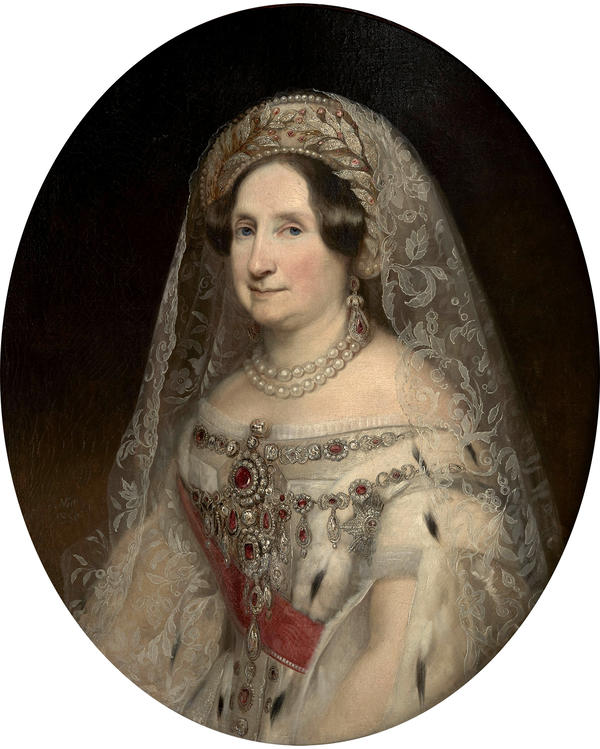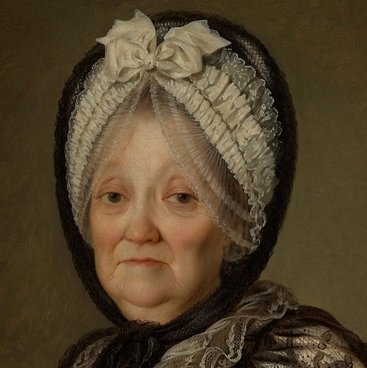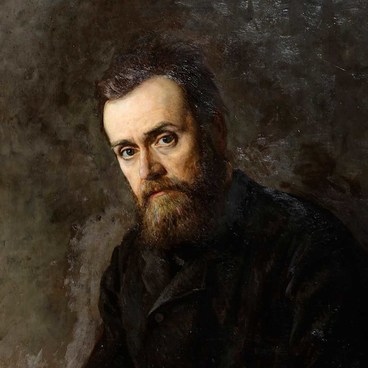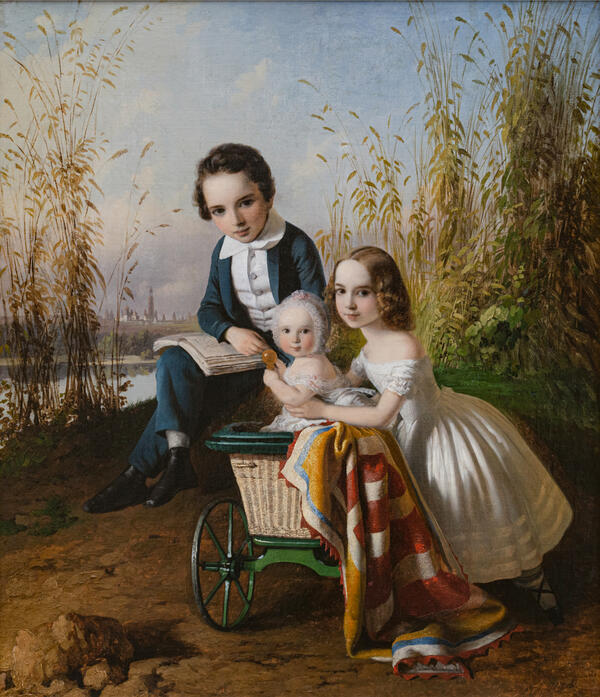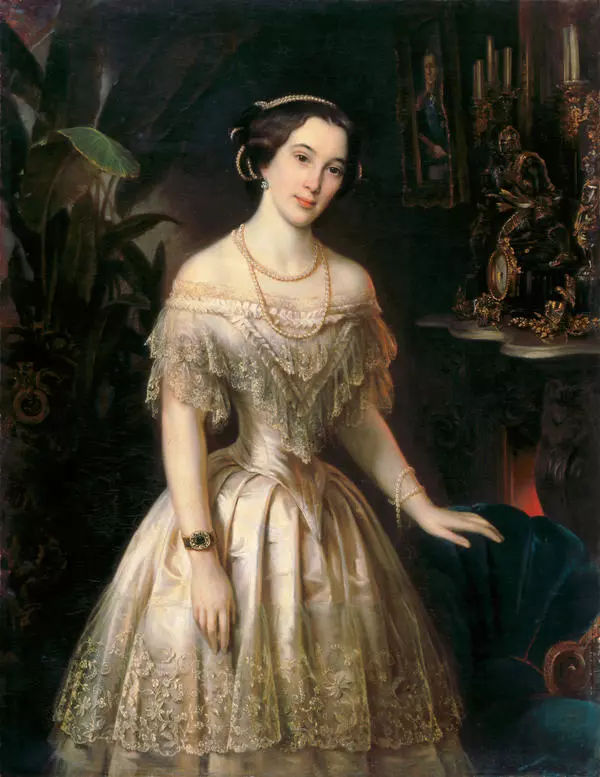This previously unknown painting was painted by Timofei Andreyevich Neff (1804-1876), a court painter of Nicholas I and Alexander II, the author of numerous portraits of nobility’s representatives.
The canvas depicts a lady on whom we can see the signs of St. Catherine’s Order of 1st degree: a red ribbon with a silver border that was worn over the right shoulder, and an eight-pointed star on the left side of the chest with the Order motto placed on it: ‘For love and fatherland’. Only ‘princesses of royal (imperial) blood as well as for special merits, including educational ones, and ladies of noble origin’ had the right to wear Signs of the Order of the Great Cross, or the highest degree. In 200 years of the existence of the order, 310 people were awarded the highest degree.
The following attributes of the portrait are jewelry depicted on a woman, exceptional in its wealth, artistic merit, size and number of precious stones set in them. The listed accessories and the period of the creation of the portrait made it possible to establish that the painting depicts Grand Duchess Anna Pavlovna, the youngest daughter of Emperor Paul I and Empress Maria Fedorovna. In 1816, twenty-year-old Anna married the Dutch Crown Prince of Orange (since 1840, King Willem II). In the years 1840-1849, Anna Pavlovna was the Queen of the Netherlands and the Grand Duchess of Luxembourg.
The Russian State Historical Archive has preserved the ‘Register of attached things belonging to Her Imperial Highness Grand Duchess Anna Pavlovna’ of 1816. A ‘diamond livery with rubies, ’ is indicated among the ‘belongings’, which is apparently depicted in the picture.
Neff painted the portrait in 1855-1856 during the visit of the sixty-year-old dowager Queen of the Netherlands to Russia. Anna visited Moscow and St. Petersburg, where she met many young members of the imperial family. Returning from Russia, she settled in the royal palace of Soestdijk, which her husband presented her. She spent her last years there.

